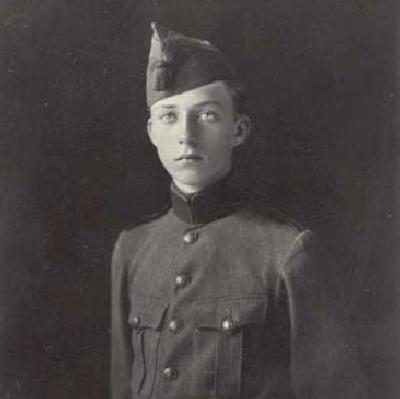
Figure 1.--Here is Crown Prince Leopold at age 13. He joined the Belgian Army and spent several months in the trenches before being sent to Engkand to attend Eton. |


|
Kaiser Wilhelm before the War explained Germany's war plans to an outraged King Albert. He wanted Albert to agree to let the German Army pass through the county unhindered. World War I began with the German invasion of Belgium. Much of the fighting on the Western Front was fought in Belgium or northern France. Almost all of the country was occupied by the Germans in the first weeks of the War. King Albert led the small Belgian Army in a dogged defence that aling with British help delayed the German advance and ultimately played a key role in France's successful defense of Paris at the Marne. The German invasion of Belgium gained them a military advantage, but it also brought the aprobrium of agressor on Germany that would significantly color world public opinion, including American opinion. This would ultimately be a major factor in America's entry into the War. Albert and Elizabeth refused to abandon their subjects and stayed on while the country's valiant, although futile, effort tried to resist the German onslaught. Albert stayed with the Belgian Army which help to hold a small area of the country, the southwest corner. Elizabeth, using the medical knowledge she had acquired at her father's clinic, opened a field hospital where she served as a nurse.
Kaiser Wilhelm before the War explained Germany's war plans to an outraged King Albert. Albert while visiting Berlin in 1909 was informed by Kaiser Wilhelm of Germany's war plan. He wanted Albert to agree to let the German Army pass through the county unhindered. King Albert is famous for remarking about the Germans, "Belgium is a nation, not a road." Albert thus was aware of the German invasion plans, but could do nothing, because Belgium's neutrality (the Treaty of London) prevented the country from arming itself.
Germany in August 1914 demanded permission to
march its army through Belgium to attack France. Albert refused. Germany not withstanding the Treaty of London (the famous "scrap of paper"), invaded Belgium. It was later said by French Prime Minister Clemenceau when asked how history would remember the start of World War I, replied "One thing is for certain: they will not say that Belgium invaded Germany." Gemany occupied most of Belgium before stopped by British and French troops. The Belgian constitution provided that the King would become Commander in Chief in case of war. Albert led the Belgians in delaying actions against the powerful Germans drive preventing the Germans from gaining victory in first month of the War as they had planned. While the Belgian Army was small and poorly equipped, The gallant Belgian action in the face of the massive German invasion force did slow the German advance, probably saving Paris and was a key factor leading to the French "Miracle on the Marne" that finally stopped the German Army. Albert became regarded as a great hero of the War. Nearly all of Belgium, however, was occupied by the Germans through 4 years of war. King Albert declined to cooperate with the Allies and maintained separate command of the Belgian forces. In 1918 Albert finally gave in to pressure and cooperated with the allies in the final offense of 1918, being made commander of the Flanders Army Group by General Foch of France.
Albert and Elizabeth refused to abandon their subjects and stayed on while the country's valiant, although futile, effort tried to resist the German onslaught. Albert stayed with the Belgian Army which help to hold a small area of the country, the southwest corner. Elizabeth, using the medical knowledge she had acquired at her father's clinic, opened a field hospital where she served as a nurse. During these terrible times, Elisabeth lifted the spirits of wounded soldiers by given each one a floral arrangement during a lonely Christmas. Her sensible soul had understood that at certain times, small details gained essential importance. Prince Leopold spent several months with the Belgan Army at the front beflre being sent to England to attend Eton.
Many Royal families throughout Europe dressed the children in military uniforms. This varied from country to country and of course with the ages of the children. If they were old enough they actually participated in the War. If not they wore uniforms as symbol of the family's commitment to the war. The boys wore both dress and field uniforms. I know of no princesses, however, who wore uniforms. At this time we only have limited information on the princes' war-time clothes.
With the Armistace on November 11, 1918, the German occupied areas of Belgium was in effect liberated. The King entered Brussells in triumph on (November 22, 1918) to begin the process of repairing the damage from 4 years of War and German occupation. Riding next to her husband, now known as the Cavalier King, Elisabeth joined the parades to receive the ovations of the Belgian populace. Prince Leopold was with the King as they marched into liberated Belgium cities of Bruges and Brussels. He marched with his regiment into Louvain.
The end of World War I also meant the beginning of a very happy period in Albert and Elisabeth's life. She could indulge in her passion for the arts. The royal couple gained worldwide recognition for their valiant defense of Belgium. Foreign travels became commonplace, and everywhere they went, the royal couple was received as heroes.
Navigate the Boys' Historical Clothing Web Site royal pages:
[Return to the Main Belgium Albert I page]
[Return to the Main royal pages]
[Austria]
[Belgium]
[France]
[Germany]
[Italy]
[Monaco]
[Netherlands]
[Norway]
[Romania]
[Russia]
[Spain]
[Sweden]
[United Kingdom]
